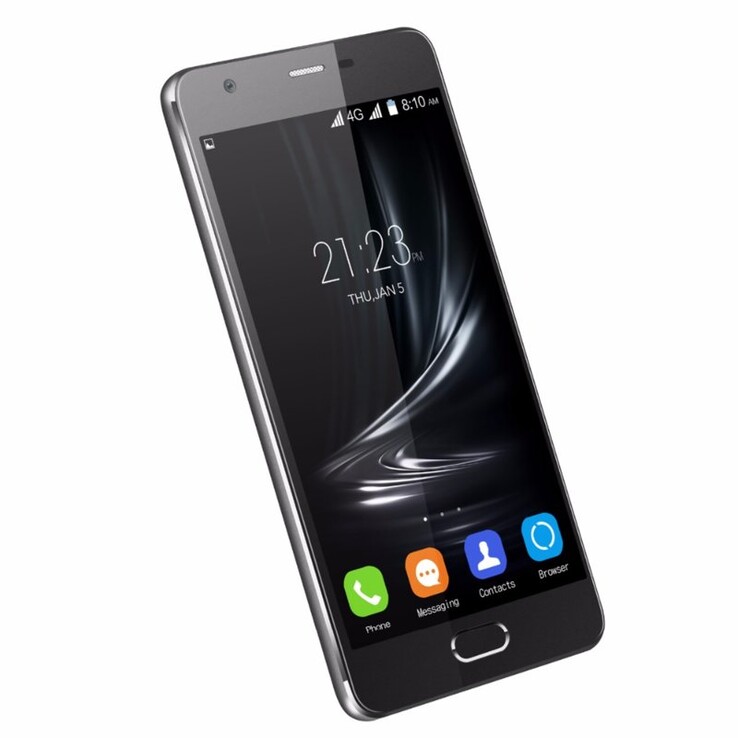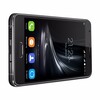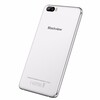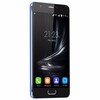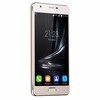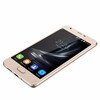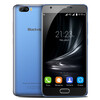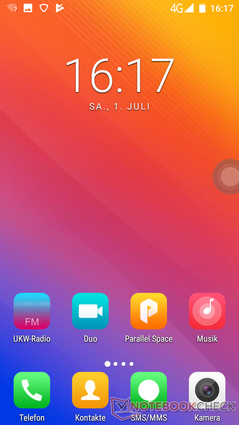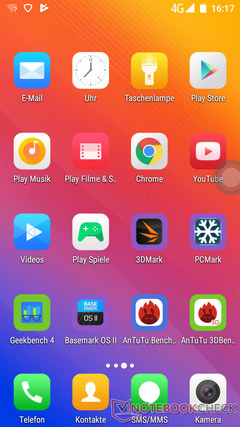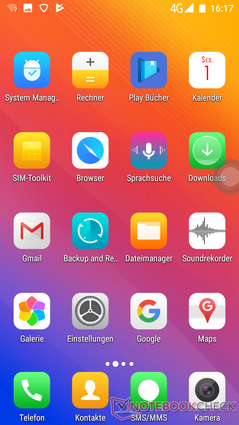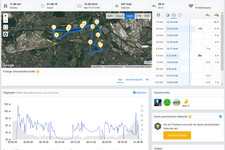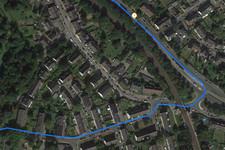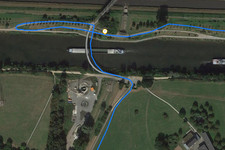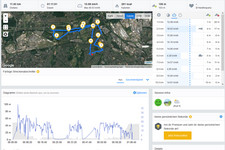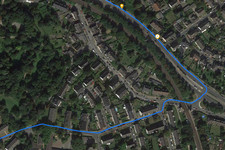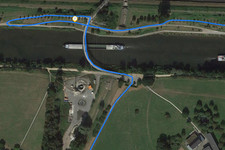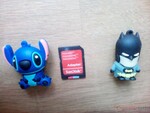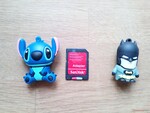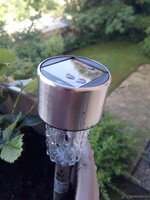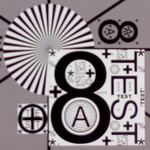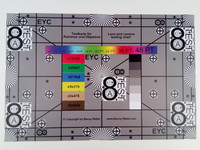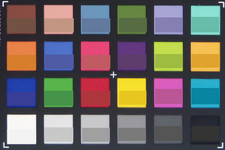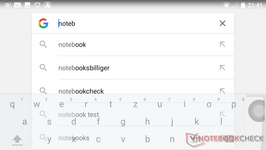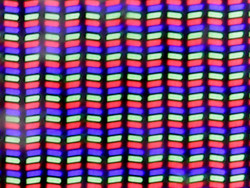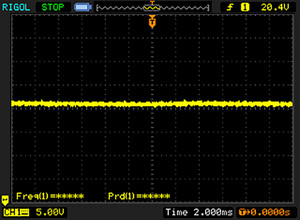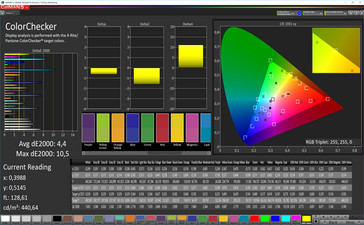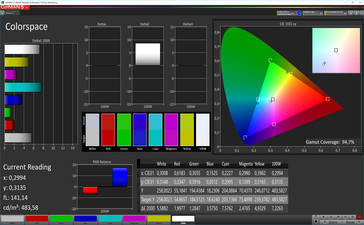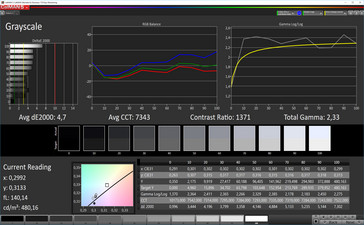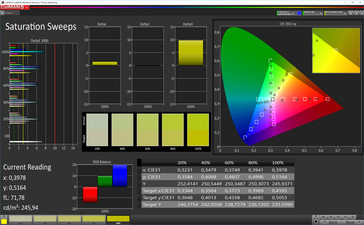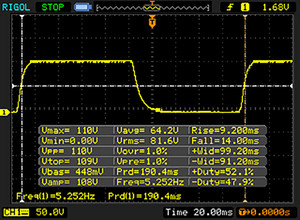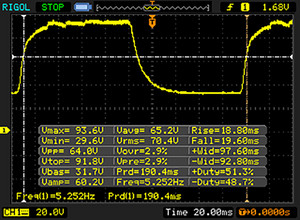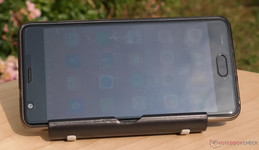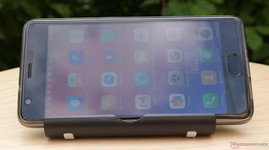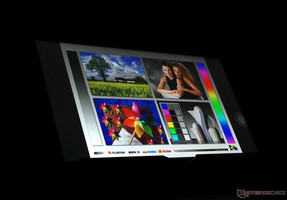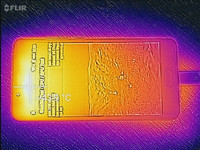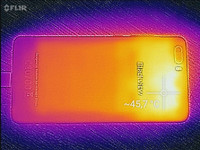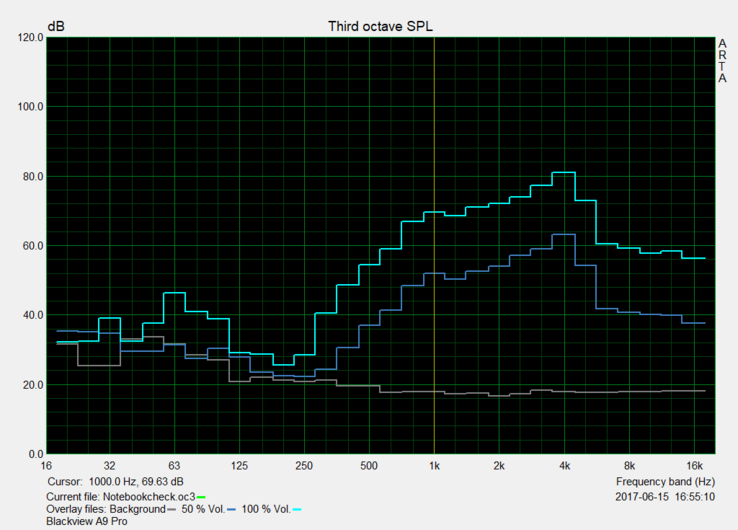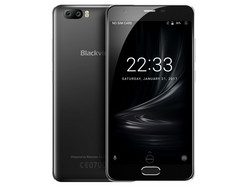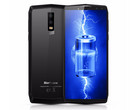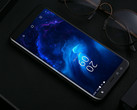Blackview A9 Pro Smartphone Review

For the original German review, see here.
Thanks to its 5-inch 1280x720 resolution display, the Blackview A9 Pro fits right in with all the other entry-level mid-range smartphones. However, when compared with Blackview’s other devices, the A9 Pro’s hardware seems rather poor: 2 GB of RAM, an MT6737 MediaTek quad-core SoC, and 16 GB of storage. In addition, instead of the usual 13 MP camera, the A9 features only an 8 MP shooter. On the flip side is its price of just $100. Yet, even considering the A9 Pro’s excellent overall build quality, it still somehow does not make any sense, and the discrepancy between the poor interior on the one side, and the excellent exterior on the other, becomes annoyingly obvious. Let us find out whether or not Blackview has done this on purpose, shall we?
The competition consists of other comparable smartphones from China (Oukitel U7 Plus, Gretel A9) as well as models made by well-known manufacturers, such as the Alcatel Shine Lite and the Asus ZenFone 3 Max. Every single one of those smartphones is equipped with the exact same MediaTek MT6737 SoC.
Case
We have to compliment Blackview for the elegant high-quality case. While its front has been clearly designed with the iPhone in mind, its rear is made of plastic for a reason: in addition to feeling very pleasant it is removable and offers access to the user-replaceable battery, the two SIM card slots (one Nano and one Micro SIM), and the microSD card slot. We found no faults with the overall design, although beauty obviously lies in the eye of the beholder. Only its weight of 170 g (~6 oz) was a little too high for our personal taste.
Connectivity
The MediaTek MT6737 quad-core SoC is accompanied by an ARM Mali T720 GPU, 2 GB of RAM, and 16 GB of eMMC storage. At the top, the phone features a 3.5 mm headphone/headset jack, and a USB-C charging while data transfer port can be found at the bottom. An appropriate USB-OTG cable is included. To the left of the USB-C port is the single speaker with the speaker grille nicely milled into the case, while to the right of it is a microphone slit. The high-quality power button and volume rocker can be found on the right-hand side. Both buttons have very clear and precise feedback and actuation points, and as is very common for Blackview smartphones, the volume rocker is slightly corrugated for easier differentiation from the power button. Unlike other Android smartphones, the A9 does not have the usual set of buttons (back, home, multitasking) instead, a single button underneath the display that acts as both back (single tap) and home (tap and hold) button. Despite its design, it cannot be pressed and contains the fingerprint reader. While unusual at first, it is pretty intuitive and easy to get used to. We have missed the multitasking view button occasionally though. If you prefer the default Android button layout, it can be enabled in the A9’s settings via on-screen buttons. And while we admit that the single-button solution is not going to be perfect for everybody, we do expect it to find at least some fans.
Software
The A9 comes with Android 7.0 and the usual set of Google apps pre-installed and is thus up-to-date. As is quite common in Blackview smartphones, their custom UI of Android lacks an app drawer, and as with the iPhone all apps can be found on the various screens. Bloatware is non-existent on this smartphone, and whatever preloaded software you do not fancy can be easily uninstalled. Running an anti-virus scan returned nothing, and the device was neither rooted nor did it have development options enabled by default. This is often the case with Chinese smartphones, and can lead to them being unable to run banking apps due to security restrictions.
Communication and GPS
There is no official information as to what Wi-Fi chip the A9 features, but based on the speeds we were able to measure (50 Mbps) we suspect it to be an 802.11n chip. Furthermore, it only supports the 2.4 GHz band. That said, it fits right in with its competitors. Unfortunately, its LTE support is restricted to bands not commonly used in the U.S.: 800, 900, 1800, 2100, and 2600 MHz.
| Networking | |
| iperf3 transmit AX12 | |
| Gretel A9 | |
| Asus Zenfone 3 Max ZC520TL | |
| Blackview A8 Max | |
| Blackview A9 Pro | |
| Alcatel Shine Lite | |
| iperf3 receive AX12 | |
| Blackview A9 Pro | |
| Asus Zenfone 3 Max ZC520TL | |
| Alcatel Shine Lite | |
| Gretel A9 | |
| Blackview A8 Max | |
The A9 supports location services only via GPS, and GLONASS or other satellite systems are not supported at all. A decent GPS signal presupposed, accuracy was around 4m (13 ft) outdoors. Compared to the Garmin Edge 500, the user’s current location is obtained much less frequently and therefore, recorded tracks are not as detailed. On our test track, we have noticed this particularly around the bridge area. Overall, GPS navigation should work as expected.
Telephony and Call Quality
The phone uses Google’s default phone app for making and receiving phone calls, as is the case with all Blackview smartphones. As we have come to expect from Blackview, call quality was very good. The included headset was okay, even though the headphones lack bass.
Cameras
According to the manufacturer, the A9 Pro’s cameras come from Samsung.
The rear-facing dual-camera in particular takes very high-quality photos – something that is quite rare in cheap Chinese smartphones. What the photos lack in saturation they make up for in sharpness and the second camera is used for a depth of field technique simulating a DSLR. Blackview seems to have finally gotten our message, and has opted for a high-quality 8 MP camera instead of the high-quantity megapixel beasts of the past.
Once you get the comparatively slow autofocus to do its job, the photos turn out quite nicely. Due to its slow speed, quick spur-of-the-moment snapshots will almost always end up being blurry and out of focus.
The front-facing camera’s photos are overall similar, but unable to keep up with the main camera when it comes to sharpness. Instead, they look very mushy.
The last three photos were all taken with the A9 Pro.
Accessories and Warranty
Included in Blackview’s standard box are a translucent protective case made of silicone, a USB-C OTG cable, a charger, a headset, and a screen protector. Additional accessories are not available, and neither is a warranty. Blackview kindly asks its users to contact them in case of problems.
Some sellers offer extra warranty for the products they sell – if the warranty is important for you, you might want to look into that before you purchase the phone. Please see our Guarantees, Return policies and Warranties FAQ for country-specific information.
Input Devices and Handling
Using the A9 Pro was very comfortable. The fast and snappy 10-point multi-touch display worked like a charm and passed our piano app test with flying colors. The aforementioned lack of the standard set of Android buttons is overcome with the single button underneath the display that acts in three ways: fingerprint reader, back, and home button. The fingerprint reader was not the fastest – sometimes a short tap was enough to unlock the phone, other times we needed three attempts to finally get it unlocked. We assume that its slim design is at least partly at fault for this behavior. The back function is achieved by a single tap, the home function by a tap and hold. Overall, we liked this approach and using only one button instead of three is a pretty elegant solution. However, we do understand that some users will miss the multitasking button and that it certainly is not ideal for all use cases. If you are not happy with the single button, the three standard Android buttons can be activated as on-screen buttons in the A9 Pro’s settings.
Display
With its very high brightness of 466 nits on average, the display is certainly one of the better screens we have seen. The rather low display resolution of 1280x720 is acceptable considering the smartphone’s low price. The display’s individual pixels are visible from a close distance. Overall, the display is one of the A9 Pro’s strong points.
| |||||||||||||||||||||||||
Brightness Distribution: 91 %
Center on Battery: 473 cd/m²
Contrast: 1351:1 (Black: 0.35 cd/m²)
ΔE ColorChecker Calman: 4.4 | ∀{0.5-29.43 Ø4.78}
ΔE Greyscale Calman: 4.7 | ∀{0.09-98 Ø5}
Gamma: 2.33
CCT: 7343 K
| Blackview A9 Pro IPS, 1280x720, 5" | Oukitel U7 Plus IPS, 1280x720, 5.5" | Blackview A8 Max IPS, 1280x720, 5.5" | Asus Zenfone 3 Max ZC520TL IPS, 1280x720, 5.2" | Alcatel Shine Lite IPS, 1280x720, 5" | Gretel A9 IPS, 1280x720, 5" | |
|---|---|---|---|---|---|---|
| Screen | -36% | -47% | -7% | -31% | -34% | |
| Brightness middle (cd/m²) | 473 | 462 -2% | 435 -8% | 507 7% | 425 -10% | 380 -20% |
| Brightness (cd/m²) | 466 | 437 -6% | 407 -13% | 474 2% | 406 -13% | 370 -21% |
| Brightness Distribution (%) | 91 | 91 0% | 86 -5% | 85 -7% | 90 -1% | 90 -1% |
| Black Level * (cd/m²) | 0.35 | 0.58 -66% | 1.08 -209% | 0.53 -51% | 0.45 -29% | 0.39 -11% |
| Contrast (:1) | 1351 | 797 -41% | 403 -70% | 957 -29% | 944 -30% | 974 -28% |
| Colorchecker dE 2000 * | 4.4 | 7.5 -70% | 5.7 -30% | 4.7 -7% | 7.6 -73% | 8 -82% |
| Colorchecker dE 2000 max. * | 10.5 | 12.8 -22% | 12.3 -17% | 7.2 31% | 15.6 -49% | 13.6 -30% |
| Greyscale dE 2000 * | 4.7 | 8.5 -81% | 5.9 -26% | 4.8 -2% | 6.6 -40% | 8.5 -81% |
| Gamma | 2.33 94% | 2.54 87% | 2.18 101% | 2.25 98% | 2.44 90% | 2.8 79% |
| CCT | 7343 89% | 8914 73% | 8164 80% | 6441 101% | 7853 83% | 8337 78% |
* ... smaller is better
Screen Flickering / PWM (Pulse-Width Modulation)
| Screen flickering / PWM not detected | |||
In comparison: 53 % of all tested devices do not use PWM to dim the display. If PWM was detected, an average of 8108 (minimum: 5 - maximum: 343500) Hz was measured. | |||
Too bad this cannot be said about its color accuracy. The average DeltaE deviation is at an acceptable 4.4 but its maximum is too high, particularly when it comes to gray scales: they show a blueish tint. If there is nothing to compare the display to, the tint is not noticeable though. Compared to its rivals, the display still fares comparatively well. Most notable are its low black level and resulting high contrast ratio of 1131:1.
Display Response Times
| ↔ Response Time Black to White | ||
|---|---|---|
| 23.2 ms ... rise ↗ and fall ↘ combined | ↗ 9.2 ms rise | |
| ↘ 14 ms fall | ||
| The screen shows good response rates in our tests, but may be too slow for competitive gamers. In comparison, all tested devices range from 0.1 (minimum) to 240 (maximum) ms. » 52 % of all devices are better. This means that the measured response time is worse than the average of all tested devices (20.2 ms). | ||
| ↔ Response Time 50% Grey to 80% Grey | ||
| 38.4 ms ... rise ↗ and fall ↘ combined | ↗ 18.8 ms rise | |
| ↘ 19.6 ms fall | ||
| The screen shows slow response rates in our tests and will be unsatisfactory for gamers. In comparison, all tested devices range from 0.165 (minimum) to 636 (maximum) ms. » 56 % of all devices are better. This means that the measured response time is worse than the average of all tested devices (31.6 ms). | ||
Performance
The A9 Pro’s MediaTek MT6737 SoC and ARM Mali-T720 GPU are probably the lowest of the low-end components that can be found in a new 2017 smartphone. Obviously, the “Pro” in the device’s name is not referring to its level of performance. Quite the contrary: the A9 Pro’s performance is its biggest weakness. While in the benchmarks it fits right in with its equally equipped competitors, subjective usage is rather slow and laggy. Launching apps feels particularly slow on the A9 Pro - it takes around 40 seconds to launch “Real Racing 3”. For a smartphone released in 2017, that is definitely too slow.
Considering the price and the equally slow competition, we should not expect more than the A9 Pro has to offer.
The microSD card reader performed quite poorly as well when benchmarked with our Toshiba Exceria Pro SDX 64 GB UHS-II reference card. Neither write nor read speeds are particularly convincing.
| AnTuTu v6 - Total Score (sort by value) | |
| Blackview A9 Pro | |
| Oukitel U7 Plus | |
| Blackview A8 Max | |
| Asus Zenfone 3 Max ZC520TL | |
| Alcatel Shine Lite | |
| Gretel A9 | |
| GFXBench (DX / GLBenchmark) 2.7 | |
| T-Rex Onscreen (sort by value) | |
| Blackview A9 Pro | |
| Oukitel U7 Plus | |
| Blackview A8 Max | |
| Asus Zenfone 3 Max ZC520TL | |
| Alcatel Shine Lite | |
| Gretel A9 | |
| 1920x1080 T-Rex Offscreen (sort by value) | |
| Blackview A9 Pro | |
| Oukitel U7 Plus | |
| Blackview A8 Max | |
| Asus Zenfone 3 Max ZC520TL | |
| Alcatel Shine Lite | |
| Gretel A9 | |
| GFXBench 3.0 | |
| on screen Manhattan Onscreen OGL (sort by value) | |
| Blackview A9 Pro | |
| Oukitel U7 Plus | |
| Blackview A8 Max | |
| Asus Zenfone 3 Max ZC520TL | |
| Alcatel Shine Lite | |
| Gretel A9 | |
| 1920x1080 1080p Manhattan Offscreen (sort by value) | |
| Blackview A9 Pro | |
| Oukitel U7 Plus | |
| Blackview A8 Max | |
| Asus Zenfone 3 Max ZC520TL | |
| Alcatel Shine Lite | |
| Gretel A9 | |
| GFXBench 3.1 | |
| on screen Manhattan ES 3.1 Onscreen (sort by value) | |
| Blackview A9 Pro | |
| Oukitel U7 Plus | |
| Blackview A8 Max | |
| Asus Zenfone 3 Max ZC520TL | |
| Alcatel Shine Lite | |
| Gretel A9 | |
| 1920x1080 Manhattan ES 3.1 Offscreen (sort by value) | |
| Blackview A9 Pro | |
| Oukitel U7 Plus | |
| Blackview A8 Max | |
| Asus Zenfone 3 Max ZC520TL | |
| Alcatel Shine Lite | |
| Gretel A9 | |
| PCMark for Android | |
| Work performance score (sort by value) | |
| Blackview A9 Pro | |
| Oukitel U7 Plus | |
| Blackview A8 Max | |
| Asus Zenfone 3 Max ZC520TL | |
| Alcatel Shine Lite | |
| Gretel A9 | |
| Work 2.0 performance score (sort by value) | |
| Blackview A9 Pro | |
| Blackview A8 Max | |
| Gretel A9 | |
| Storage score (sort by value) | |
| Blackview A9 Pro | |
| Blackview A8 Max | |
| Computer Vision score (sort by value) | |
| Blackview A9 Pro | |
| Blackview A8 Max | |
| Octane V2 - Total Score (sort by value) | |
| Blackview A9 Pro | |
| Oukitel U7 Plus | |
| Blackview A8 Max | |
| Asus Zenfone 3 Max ZC520TL | |
| Alcatel Shine Lite | |
| Gretel A9 | |
| JetStream 1.1 - Total Score (sort by value) | |
| Blackview A9 Pro | |
| Oukitel U7 Plus | |
| Blackview A8 Max | |
| Asus Zenfone 3 Max ZC520TL | |
| Alcatel Shine Lite | |
| Gretel A9 | |
| Mozilla Kraken 1.1 - Total (sort by value) | |
| Blackview A9 Pro | |
| Oukitel U7 Plus | |
| Blackview A8 Max | |
| Asus Zenfone 3 Max ZC520TL | |
| Alcatel Shine Lite | |
| Gretel A9 | |
| AndroBench 3-5 | |
| Sequential Write 256KB SDCard (sort by value) | |
| Blackview A9 Pro | |
| Oukitel U7 Plus | |
| Blackview A8 Max | |
| Asus Zenfone 3 Max ZC520TL | |
| Alcatel Shine Lite | |
| Gretel A9 | |
| Sequential Read 256KB SDCard (sort by value) | |
| Blackview A9 Pro | |
| Oukitel U7 Plus | |
| Blackview A8 Max | |
| Asus Zenfone 3 Max ZC520TL | |
| Alcatel Shine Lite | |
| Gretel A9 | |
| Geekbench 4.4 | |
| Compute RenderScript Score (sort by value) | |
| Blackview A9 Pro | |
| Gretel A9 | |
| 64 Bit Multi-Core Score (sort by value) | |
| Blackview A9 Pro | |
| Gretel A9 | |
| 64 Bit Single-Core Score (sort by value) | |
| Blackview A9 Pro | |
| Gretel A9 | |
* ... smaller is better
Gaming
As mentioned before, the A9 Pro’s ARM Mali-T720 GPU is not really made for gaming. And long before you even start playing any game, the long application launch times will spoil the gaming experience before you start. Once loaded, games such as “Real Racing 3” were smooth and playable with reduced details. The phone’s sensors worked fast and reliably.
Emissions
Temperature
(±) The maximum temperature on the upper side is 44.6 °C / 112 F, compared to the average of 35.2 °C / 95 F, ranging from 21.9 to 247 °C for the class Smartphone.
(±) The bottom heats up to a maximum of 44.1 °C / 111 F, compared to the average of 34 °C / 93 F
(±) In idle usage, the average temperature for the upper side is 35.2 °C / 95 F, compared to the device average of 32.9 °C / 91 F.
Speakers
As expected, the single speaker’s performance was pretty poor. No worse than on the average smartphone, just… well, bad. Blackview is not even trying to trick us into thinking there is more than one speaker installed. The only visible speaker grille is located left of the USB port, while a single slit on its right side houses the microphone. As is quite common for smartphones, the speaker entirely lacks bass. Overall volume was okay, but we dare say the speaker performed below average.
The included headphones do not really help, and they lack bass as well.
Blackview A9 Pro audio analysis
(+) | speakers can play relatively loud (84.4 dB)
Bass 100 - 315 Hz
(-) | nearly no bass - on average 27% lower than median
(±) | linearity of bass is average (12.3% delta to prev. frequency)
Mids 400 - 2000 Hz
(±) | higher mids - on average 8.6% higher than median
(±) | linearity of mids is average (10.3% delta to prev. frequency)
Highs 2 - 16 kHz
(±) | higher highs - on average 10.4% higher than median
(±) | linearity of highs is average (11.2% delta to prev. frequency)
Overall 100 - 16.000 Hz
(-) | overall sound is not linear (32.9% difference to median)
Compared to same class
» 83% of all tested devices in this class were better, 1% similar, 15% worse
» The best had a delta of 11%, average was 35%, worst was 134%
Compared to all devices tested
» 92% of all tested devices were better, 1% similar, 7% worse
» The best had a delta of 4%, average was 24%, worst was 134%
Oukitel U7 Plus audio analysis
(±) | speaker loudness is average but good (81.6 dB)
Bass 100 - 315 Hz
(-) | nearly no bass - on average 31.6% lower than median
(±) | linearity of bass is average (7.4% delta to prev. frequency)
Mids 400 - 2000 Hz
(±) | reduced mids - on average 6.1% lower than median
(±) | linearity of mids is average (9.1% delta to prev. frequency)
Highs 2 - 16 kHz
(±) | higher highs - on average 9.3% higher than median
(±) | linearity of highs is average (9.2% delta to prev. frequency)
Overall 100 - 16.000 Hz
(-) | overall sound is not linear (34.2% difference to median)
Compared to same class
» 84% of all tested devices in this class were better, 1% similar, 15% worse
» The best had a delta of 11%, average was 35%, worst was 134%
Compared to all devices tested
» 93% of all tested devices were better, 1% similar, 6% worse
» The best had a delta of 4%, average was 24%, worst was 134%
Frequency diagram (checkboxes selectable/desectable!)
Energy Management
Power Consumption
Traditionally, Chinese smartphones have not been the most energy efficient, to say the least, and the Blackview A9 Pro is mediocre at best as well. With only 1.49 watts idle power consumption, the Alcatel Shine is almost a full watt below the A9 Pro’s 2.31 watts, and around 2.5 watts below the A9 Pro’s 7 watts power consumption under load. The included 1 A charger is not the fastest, and charging the phone from 0 to 100% takes around 3 hours.
| Off / Standby | |
| Idle | |
| Load |
|
Key:
min: | |
| Blackview A9 Pro 3000 mAh | Oukitel U7 Plus 2500 mAh | Blackview A8 Max 3000 mAh | Asus Zenfone 3 Max ZC520TL 4100 mAh | Alcatel Shine Lite 2460 mAh | Gretel A9 2300 mAh | |
|---|---|---|---|---|---|---|
| Power Consumption | 3% | 22% | 14% | 37% | 20% | |
| Idle Minimum * (Watt) | 1.06 | 0.86 19% | 0.74 30% | 0.74 30% | 0.6 43% | 0.77 27% |
| Idle Average * (Watt) | 2.31 | 2.68 -16% | 1.97 15% | 2.04 12% | 1.49 35% | 1.99 14% |
| Idle Maximum * (Watt) | 2.43 | 2.78 -14% | 2.09 14% | 2.22 9% | 1.66 32% | 2.2 9% |
| Load Average * (Watt) | 6.51 | 5.33 18% | 4.89 25% | 5.57 14% | 3.75 42% | 4.99 23% |
| Load Maximum * (Watt) | 6.96 | 6.49 7% | 5.09 27% | 6.59 5% | 4.57 34% | 5.14 26% |
* ... smaller is better
Battery Life
Battery life is decent overall. However, given that all devices except for the Alcatel Shine had a rather high power consumption, the competition was not too fierce. And while the A9 Pro’s battery life is nothing to write home about it did well enough to last the average user for a full day. It might even survive two full days of light usage, but power users will most probably avoid this device for other reasons anyway.
| Blackview A9 Pro 3000 mAh | Oukitel U7 Plus 2500 mAh | Blackview A8 Max 3000 mAh | Asus Zenfone 3 Max ZC520TL 4100 mAh | Alcatel Shine Lite 2460 mAh | Gretel A9 2300 mAh | |
|---|---|---|---|---|---|---|
| Battery runtime | -49% | -29% | 14% | -11% | -39% | |
| Reader / Idle (h) | 19.3 | 24.4 26% | ||||
| WiFi v1.3 (h) | 11.9 | 6.1 -49% | 8.4 -29% | 13.6 14% | 10.8 -9% | 7.6 -36% |
| Load (h) | 4.9 | 5 2% | 4.3 -12% | 2.9 -41% | ||
| H.264 (h) | 14.1 |
Pros
Cons
Verdict
The Blackview A9 Pro is well made, nice to look at, and has a decent camera to boot. Unfortunately, it becomes very slow as soon as it has more to do than using WhatsApp or browsing the web. Application launch times are noticeably longer than on other smartphones, but if your overall expectations are low you will not be disappointed.
On the plus side are its timeless and solid design, its 10-point multi-touch touchscreen, and a very good rear-facing camera.
Its downsides are its poor performance and mediocre battery life.
As far as entry-level smartphones go, this is most certainly an insider tip with a price tag that will be hard to beat.
Considering its price, the A9 Pro is a very good entry-level smartphone avoiding most of the entry-level pitfalls without adding new ones.
We can recommend this device for those users who actually emphasize the “phone” part of the smartphone and cannot do without a good camera. If, on the other hand, you are running plenty of background applications and services or demanding games, then we advise you to steer clear of the A9 Pro. And never mind the “Pro” in the smartphone’s name – it probably stands for procrastination.
Blackview A9 Pro
- 07/11/2017 v6 (old)
Florian Schaar




